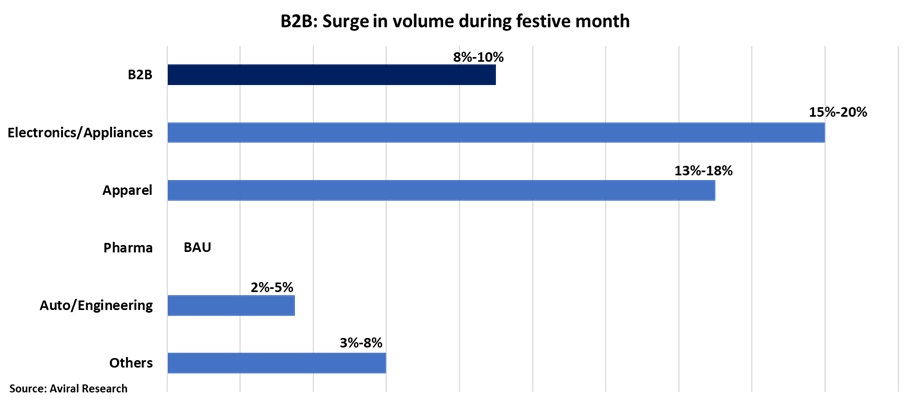As the much-anticipated festive season draws near, there is a widespread expectation of a surge in demand, particularly across all consumer-facing industries, regardless of distribution channel. Manufacturers, distributors, e-commerce platforms, and logistics providers gear up for what promises to be an exhilarating and high-growth period.
While the festive excitement is palpable, there are significant economic factors in play beyond just celebration. This year post high inflation in Q1, it’s decline in pre festive months, coupled with the stabilization of the Consumer Confidence Index, indicates that the economy is primed for growth in the latter half of the year. Categories such as fashion and automobiles are particularly hopeful that the festive season will catalyse a surge in demand. At the same time, e-commerce platforms, which have seen growth rates taper in recent years, are anticipating a rebound during this period, marking the potential for accelerated expansion. This sets the stage not only for economic growth but also for significant advancement in the logistics sector, which plays a critical role in supporting this surge.
However, the seasonal spike in demand places immense pressure on the logistics sector, especially given the short window during which this demand materializes. Logistics providers are tasked with optimizing transport capacity, efficiency, space utilization, and manpower to ensure seamless operations. To maintain service levels, logistics companies must demonstrate considerable flexibility and agility in their operations. The ability to scale up in terms of warehouse space, workforce, and transportation becomes a key determinant of success.
Normally festive season is spread from September to December, But the peak in logistics volume takes place in the month prior to Diwali. In the peak period surge in volume also varies according to channel and category. In last decade e-commerce surge was highest, but in changed scenario this year q-commerce is expected to surge much higher than e-commerce. Past trends show that surge in e-commerce remains approx. 30%-35% over average monthly volume of Q1, while the same for B2B hovers approx. 8%-10%. This year this surge for q-commerce is expected to be more than 50%. In case of B2B the spike remains spread to a larger span of time compared to e-commerce due to discount sales. Such characteristics of e-com makes more challenge in managing festive demand.


Logistics service providers typically begin preparations approximately two months ahead of the festive season to ensure they are well-equipped to handle the surge in demand. This period of heightened activity requires meticulous planning, from ramping up workforce levels to securing additional infrastructure. According to industry estimates, the logistics sector employs over a million additional personnel during this time to manage the increased workload across various functions such as warehousing, transportation, order fulfilment, and last-mile delivery. These temporary employees play a crucial role in ensuring smooth operations, helping to maintain high service levels during the peak festive period. Beyond manpower, logistics companies also lease additional warehousing space and vehicles on a short-term basis to accommodate the influx of goods and their movement.
To manage these heightened demands, logistics providers rely heavily on advanced technology to forecast demand, streamline on-ground operations, and maintain full visibility across the value chain. This end-to-end visibility allows them to identify and mitigate risks, ensuring a smooth flow of goods. During the critical festive period, logistics providers focus on enhancing reliability and speeding up operations to meet customer expectations. Automation, along with smart supply chain solutions such as IoT, AI, and data analytics, plays a pivotal role in improving response times and turnaround, allowing logistics companies to effectively navigate the challenges posed by sudden demand surges.
By leveraging these technologies and maintaining operational agility, logistics providers can rise to the occasion, ensuring timely deliveries and sustaining the festive momentum across industries. The result is not just improved service levels but also a strengthened foundation for future growth in both the logistics sector and the broader economy
